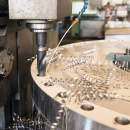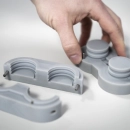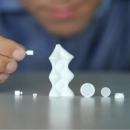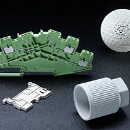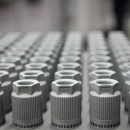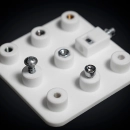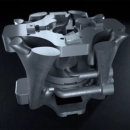3D printing processes
The word "3D printing" refers to a collection of additive manufacturing processes in which three-dimensional objects are produced layer by layer from a non-shape-bound starting material. Originally, this technology was mainly developed for the rapid creation of prototypes from computer-generated 3D models. In the meantime, 3D printing has established itself in many industries due to its diverse application possibilities. In addition to prototype development, which is still an important field of application for 3D printing, master models and tool inserts made of plastic, metal or ceramics are also produced in the industrial sector. New materials are continuously being developed, which constantly expands the possible applications of 3D printing.
More about our 3D printing service >
Plastic, metal, ceramics – the right technology for every material
The PROTIQ Marketplace offers 3D printing in many well-known manufacturing processes. The technology we use depends on the selected material and the intended application of your 3D object. A wide range of high-quality materials for additive manufacturing enables us to always offer our customers the optimum solution for their projects. Production with our high-end systems always guarantees you the best possible quality.
.png)
Laser melting (metal)
Selective Laser Melting is a layer-building 3D printing process in which metal powder is locally fused by the energy of a laser. The components are connected to a support structure which is firmly welded to the base plate. This ensures heat dissipation and fixation during production. The support structures are removed manually after 3D printing.
.png)
Selective laser sintering (plastic)
Selective Laser Sintering is an additive manufacturing principle in which thin layers of a powdered plastic are fused into a 3D object. Using a squeegee, a combination of several squeegees or a roller, a fine layer of powder is applied to the build platform and heated to just below the melting point. Using an infrared laser, the thermoplastic material is melted using predetermined coordinates.
.png)
Multi Jet Fusion
Multi Jet Fusion is a new 3D printing process in which plastic in powder form is made into innovative 3D objects at high speed. Unlike the established powder-based methods of selective laser melting and selective laser sintering, the individual layers of the material are not melted using laser beams. Instead, the powder is jetted with two different binding agents and melted by the thermal energy of several infrared lamps.
.png)
Stereolithography (plastic)
Stereolithography is a layer construction system in which a liquid plastic, such as epoxy resin, is cured locally in layers of 0.025 mm to 0.25 mm with UV light (UV laser). After a layer has been completely illuminated by the laser, the machine lowers the construction platform in the resin bath by exactly one layer of thickness. The surface is then again wetted with the liquid and the exposure process restarts. This process repeats until the object has been fully produced.
.png)
PolyJet/MultiJet Modeling
Of all 3D printing processes, PolyJet or MultiJet modeling most closely resembles traditional inkjet printing. A printhead moves across the build platform spraying fine droplets of a liquid polymer. The material is irradiated almost simultaneously with UV light and cured directly that way.
.png)
Ceramic 3D printing
The additive manufacturing process Lithography-based Ceramic Manufacturing (LCM) is used to produce ceramic components with the highest level of detail and a smooth surface. The basis for these high-performance technical objects is a ceramic powder monomer suspension. It is cured in layers in the first step under UV light and built that way to form a green body. The green body is then subjected to a thermal treatment at temperatures of up to 1600 °C, whereby the photopolymers which were used as binders are removed. In a final sintering process, the ceramic particles are compacted.
.png)
Binder-Jetting
In the Binder-Jetting process, plastic powder is applied layer by layer and locally bonded with a liquid at the points where the component should be produced. The result of binder jetting is three-dimensional objects in almost any conceivable shape, without the use of support structures. In contrast to thermal processes such as selective laser sintering, the material is processed in a cold chemical process.
.png)
Glass 3D Printing
The continuous development of 3D printing has now also opened up the possibility of processing glass in an innovative way. Glass is an extremely useful material, but traditional processing has been challenging due to the high melting temperature and associated energy-intensive processing methods. This is where lithography-based glass manufacturing (LGM) comes in.
.png)
LMM (metal)
Lithography-based metal manufacturing (LMM) is a process for the precise production of small metal components in which a metal powder-photopolymer mixture is applied layer by layer and exposed to light to create a green compact. Thermal debinding and sintering produce high-precision sintered metal components that can be used in various industries.
.png)
Hot Lithography (plastic)
Hot Lithography is a laser-based process for additive manufacturing of precision plastic parts. It features a unique heating and coating mechanism that makes it possible to produce prototypes as well as parts for industrial applications. The innovative hot layer technology allows the processing of highly viscous and solid materials. This allows parts to be printed with outstanding material durability and a smooth, true-to-life surface.
.png)
CLIP
The CLIP™ process (Continuous Liquid Interface Production) is an additive manufacturing method that uses UV light, oxygen and programmable liquid resins to produce components with outstanding mechanical properties. This innovative technology, also known as Digital Light Synthesis™ Technology (DLS), differs from other 3D printing processes because the products are not built up layer by layer, but are manufactured as one continuous piece. This results in a significantly faster production time, up to 100 times faster than other additive manufacturing processes.
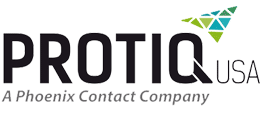


 Deutsch
Deutsch English
English Italiano
Italiano

